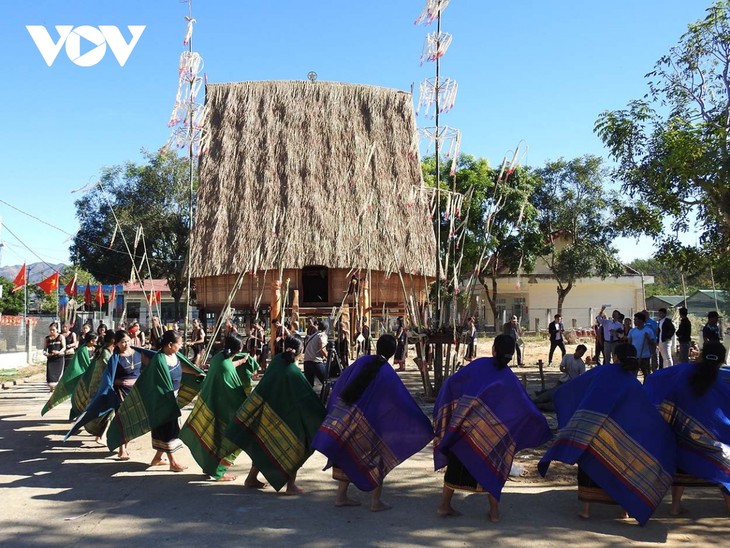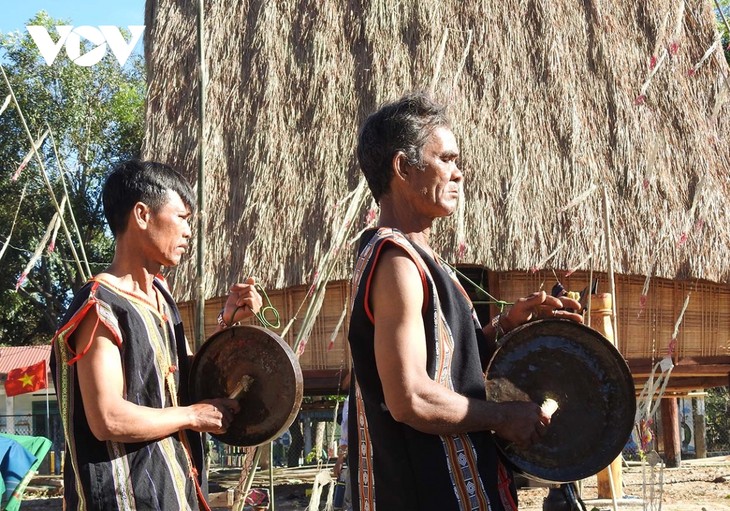The Rong house is a sacred symbol of several ethnic minorities in the Central Highlands, including the Xo Dang. With the support of authorities at all levels, the Xo Dang have encouraged artisans and local people to restore and preserve the traditional Rong houses for later generations.

Dak De villagers at a village festival. (Photo: VOV)
For the Xo Dang people in Kon Tum province, the dry season is a time for important community festivals.
70-year-old A Thiu, one of four elderly people in Dak De hamlet, knows a lot about the construction of the Rong houses of the Ha Lang people, a branch of the Xo Dang ethnic group. He said that without the traditional Rong house, all the village festivals would be less joyful. His village’s Rong house was restored last year because it is a symbol of national solidarity and community power, A Thiu said.
“Restoring the Rong house was a way of preserving the culture of the Central Highlands and the Ha Lang people. With the support of the Party and State and the material and spiritual contribution of local people, we were able to build a spacious Rong house like this.”
More than 200 households in Dak De hamlet got involved in the restoration. They received support from the Kon Tum Museum and Library - photos, information about folk culture, and documents about festivals and community activities in the Rong house. Local people have also collected materials and researched decorative patterns and construction techniques.
62-year-old A Un asked the village elders about the ancient gong melodies and Xoang dances, and they practiced together. To paint the decorative patterns on the Rong house’s pillars and beams, he researched how our ancestors used to do it.
“There was a particularly beautiful pattern that I remembered seeing as a tattoo on my father. It took me two days to finish painting it. It was a lot of work, but I’m proud of such a beautiful Rong house,” he said.

Villagers play the gong at the Rong house. (Photo: VOV)
Through the efforts of all the villagers, the traditional Rong house was completed in 2 months. The house, 13 meters high, 9.4 meters long, and 5 meters wide, was built at a cost of 4,000 USD, paid for by the National Target Program for socio-economic development in ethnic minority and mountainous areas and the financial contributions of Dak De villagers.
Nguyen Van Quang, deputy director of the Kon Tum provincial Museum-Library, said the Rong house helps to connect generations of Ha Lang people and promote the cultural values of their daily life. “The effort to restore the Rong house was supported by local young people who learned a lot about their culture from the project.”
In Kon Tum province most of 500 ethnic minority hamlets now have a Rong house, more than 200 of them in the traditional style.